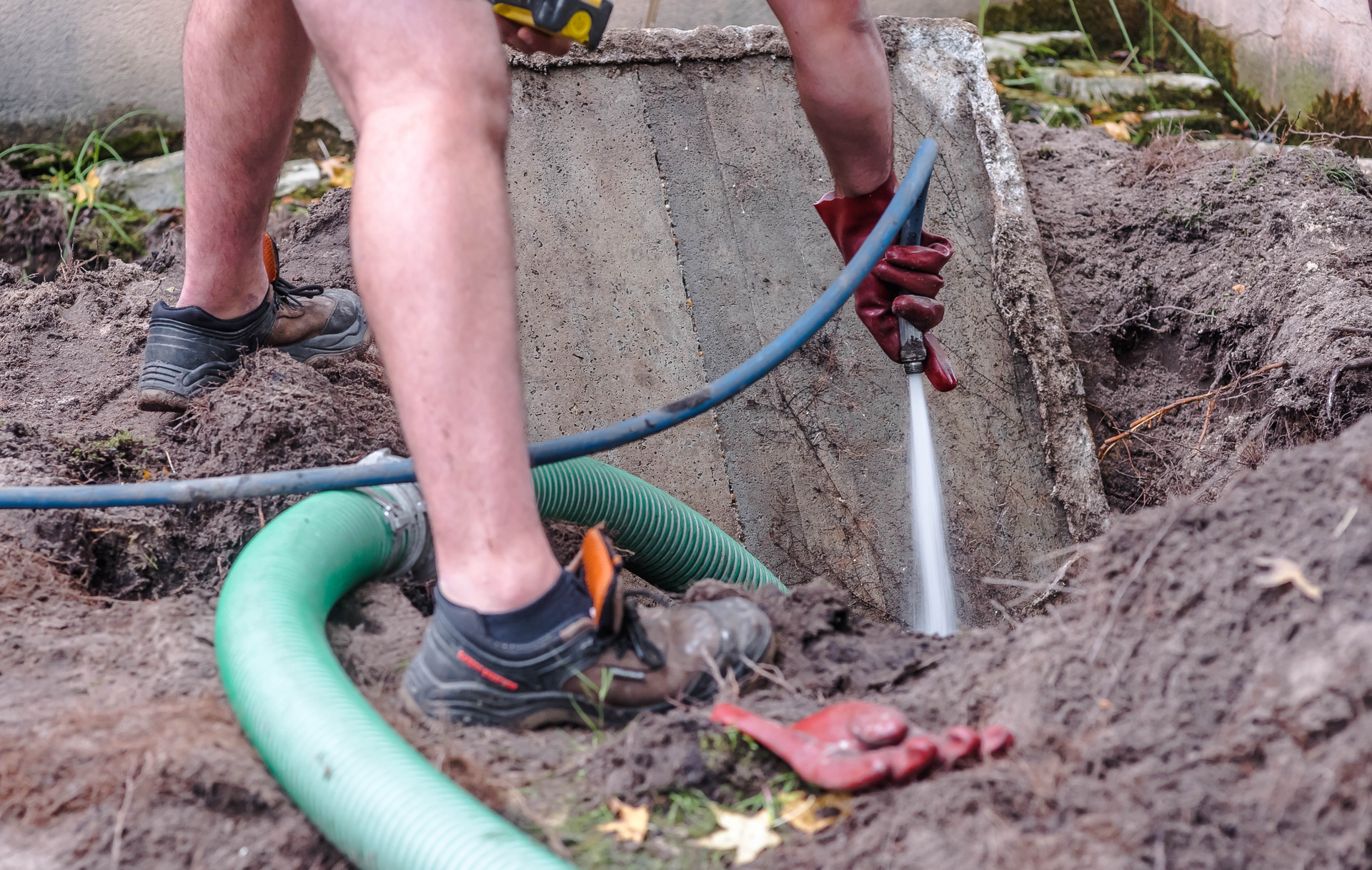What to Do When You Smell Septic Odors Inside Your Oxford, MS Home
February 5, 2024
What to Do When You Smell Septic Odors Inside Your Oxford, MS Home
A home should be a place of comfort and fresh air, but when unpleasant septic odors start wafting through your living space in Oxford, MS, it can be distressing. Septic odors inside your home are not only unpleasant but also indicative of an underlying issue with your septic system. In this comprehensive guide, we'll explore the common causes of septic odors indoors, what to do when you encounter them, and how Oxford Septic Service can help you resolve these problems promptly.
Understanding the Causes
Before delving into the steps to take when you detect septic odors in your home, it's crucial to understand what might be causing these unpleasant scents. Here are some common reasons:
Dried P-Traps: In some cases, the water in P-traps (the U-shaped pipe beneath sinks, tubs, and showers) can evaporate, allowing septic odors to enter your home. Running water down these drains can help refill the P-trap and block the odors.
Blocked Vent Pipes: Vent pipes on your roof allow air into the plumbing system, ensuring wastewater flows smoothly. If these pipes become blocked or damaged, it can lead to slow drainage and septic odors.
Toilet Seal Issues: The wax seal between your toilet and the floor can degrade over time, allowing odors to escape. If you notice the smell around your toilet, this could be the culprit.
Backed-Up Septic Tank: A more serious issue occurs when your septic tank becomes full or experiences a blockage. This can cause sewage backup and septic odors in your home.
Immediate Steps to Take
When you detect septic odors inside your home, follow these immediate steps:
Open Windows and Ventilate: The first step is to let fresh air in by opening windows and doors. This can help dissipate the odors and improve indoor air quality.
Check and Fill P-Traps: Ensure that all P-traps in your home have water in them. Run water down sinks, tubs, and showers if needed to refill the traps and block septic odors.
Inspect the Toilet Seal: If you suspect the toilet seal is compromised, consider calling a plumber to inspect and replace it if necessary.
Contact a Professional: If the odors persist or are accompanied by slow drains, gurgling pipes, or sewage backup, it's time to contact a professional septic service like Oxford Septic Service. They can assess the situation and provide the necessary repairs.
Why Choose Oxford Septic Service
Oxford Septic Service is your trusted partner in resolving septic system issues and eliminating indoor septic odors. Here's why Oxford residents rely on us:
Rapid Response: We understand the urgency of septic system problems. Our team responds promptly to your call and addresses the issue swiftly.
Advanced Equipment: We utilize state-of-the-art equipment, including jetting services, to diagnose and resolve septic system problems efficiently and effectively.
Comprehensive Inspections: Our technicians conduct thorough inspections to identify the root cause of septic odors. This ensures that we not only address the immediate issue but also prevent future occurrences.
Experienced Team: With years of experience in the industry, our technicians have encountered a wide range of septic system challenges. This expertise allows us to provide reliable and lasting solutions.
Customer Satisfaction: We prioritize customer satisfaction, aiming to leave your property in better condition than when we arrived. Our courteous and professional team treats your home with respect.
Conclusion
Septic odors inside your home are a clear sign that something is amiss with your septic system. Ignoring these odors can lead to more significant problems and potential health hazards. By following the immediate steps outlined in this guide and contacting Oxford Septic Service, you can address the issue promptly and restore a fresh and comfortable environment in your home. Don't let septic odors disrupt your daily life; reach out to the experts at Oxford Septic Service for reliable solutions.

Septic tank pumping is a crucial aspect of septic system maintenance that often goes overlooked by property owners. Regular pumping helps prevent costly repairs, prolongs the lifespan of the septic system, and protects the environment from contamination. In this guide, Oxford Septic Services shares valuable insights into the importance of routine septic tank pumping and its many benefits. Chapter 1: Understanding the Role of Septic Tank Pumping Overview of the septic tank pumping process and its significance in maintaining a healthy septic system Explanation of how septic tank pumping removes accumulated solids and sludge from the tank, preventing clogs and backups Chapter 2: Preventing Costly Repairs and System Failures Discussion of the potential consequences of neglecting septic tank pumping, including system backups, drain field damage, and groundwater contamination Exploration of the financial implications of septic system repairs and replacements compared to the relatively low cost of routine pumping Chapter 3: Extending the Lifespan of Your Septic System Explanation of how regular septic tank pumping helps prolong the lifespan of the septic system by reducing stress on system components and preventing premature failure Discussion of the correlation between routine pumping and the overall health and longevity of the septic system Chapter 4: Protecting the Environment and Public Health Examination of the environmental and public health risks associated with untreated wastewater discharge from poorly maintained septic systems Explanation of how routine septic tank pumping helps mitigate these risks by preventing groundwater contamination and protecting local water sources Chapter 5: Maintaining Property Value and Resale Potential Exploration of the impact of a well-maintained septic system on property value and resale potential Discussion of how routine septic tank pumping demonstrates responsible property ownership and can increase buyer confidence during real estate transactions Chapter 6: Ensuring Regulatory Compliance Overview of local regulations and requirements regarding septic system maintenance and pumping frequency Explanation of how routine septic tank pumping helps property owners remain in compliance with regulatory standards and avoid potential fines or penalties Chapter 7: Best Practices for Scheduling Septic Tank Pumping Recommendations for establishing a regular pumping schedule based on factors such as household size, water usage, and septic system capacity Tips for working with professional septic service providers like Oxford Septic Services to schedule timely and efficient pumping services Conclusion: Routine septic tank pumping is an essential aspect of responsible septic system ownership, offering numerous benefits for property owners, the environment, and public health. By understanding the importance of routine pumping and working with trusted professionals like Oxford Septic Services, property owners can ensure the long-term performance and reliability of their septic systems.

Installing a septic system is a critical step in ensuring proper wastewater management for residential and commercial properties. However, the installation process can be complex and requires careful planning and execution. In this comprehensive guide, Oxford Septic Services provides essential information and expert tips for homeowners and property owners considering septic system installation. Chapter 1: Understanding the Basics of Septic Systems Overview of septic systems and their components, including the septic tank, drain field, and distribution box Explanation of how septic systems function to treat and dispose of wastewater on-site, without access to a municipal sewer system Chapter 2: Assessing Site Conditions and Permitting Requirements Guidance on assessing soil conditions, topography, and site suitability for septic system installation Explanation of the permitting process and regulatory requirements for septic system installation, including obtaining necessary permits and approvals from local authorities Chapter 3: Designing the Septic System Overview of the steps involved in designing a septic system, including determining system size, layout, and location Discussion of factors to consider when designing a septic system, such as property size, soil type, and groundwater levels Chapter 4: Selecting and Installing Septic System Components Explanation of the different types of septic tanks, drain fields, distribution boxes, and other system components available for installation Step-by-step instructions for properly installing septic system components, including excavation, tank placement, piping installation, and backfilling Chapter 5: Ensuring Proper System Ventilation and Plumbing Connections Importance of providing adequate ventilation for the septic system to prevent the buildup of harmful gases, such as methane and hydrogen sulfide Guidelines for properly connecting plumbing fixtures, such as toilets, sinks, and showers, to the septic system to ensure efficient wastewater flow Chapter 6: Conducting Final Inspections and Testing Overview of the final inspection and testing process to ensure that the septic system meets all regulatory requirements and functions properly Explanation of common tests conducted during the final inspection, such as hydraulic load testing, dye testing, and soil percolation testing Chapter 7: Maintaining and Caring for Your New Septic System Recommendations for ongoing maintenance and care of the newly installed septic system, including routine pumping, inspection, and monitoring Tips for avoiding common pitfalls and ensuring the long-term reliability and performance of the septic system Conclusion: By following the guidelines and expert tips provided in this guide, property owners can navigate the septic system installation process with confidence. With careful planning, proper design, and professional installation by Oxford Septic Services, property owners can ensure the reliable operation and longevity of their septic systems for years to come.
